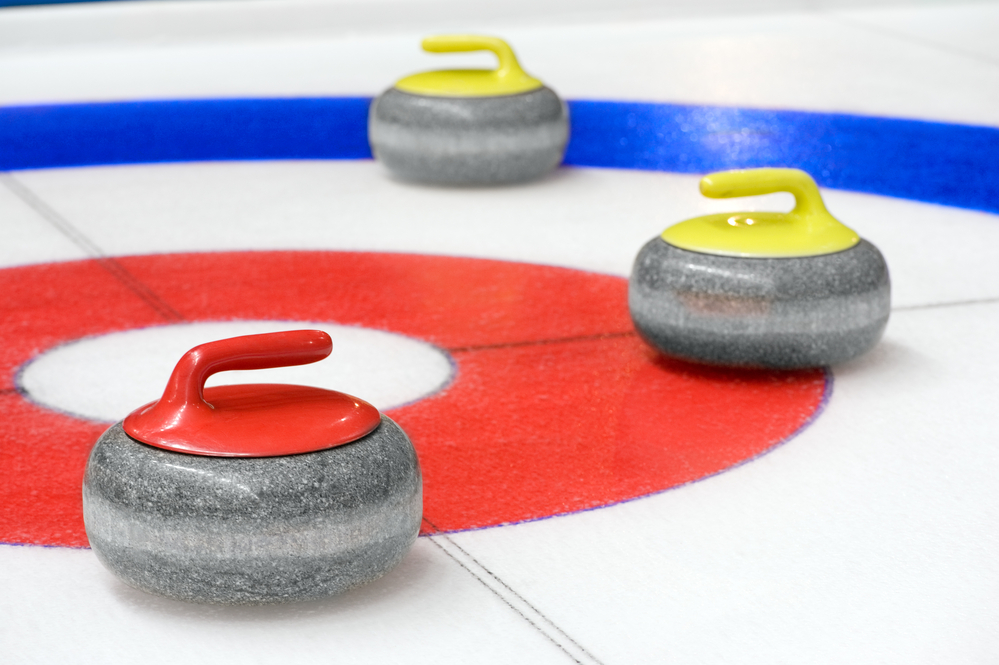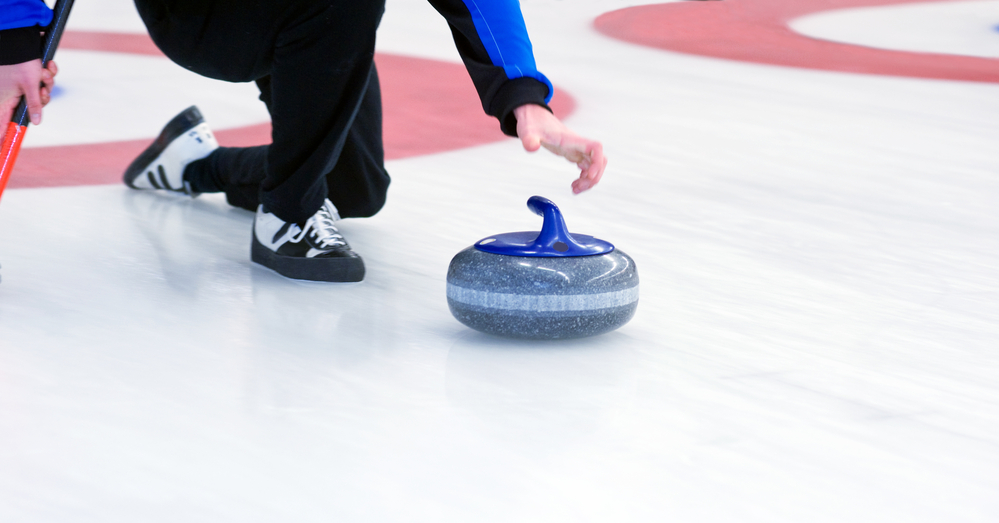The hammer—the last stone thrown during the end of curling—is typically decided one of two ways. First, the team may win the hammer through a pre-game coin toss. Second, the teams may “draw to the button.” If the teams draw to the button, each team gets to throw one stone. The team whose stone ends up closest to the goal on this single throw is awarded the hammer. Controlling the hammer gives the team a significant advantage.

Determining the Hammer at the Beginning of the Game
To start a curling match, one team is assigned the hammer. This can be done through a coin toss or by drawing to the button.
Coin Toss
A coin toss is a simple way to decide which team gets the hammer initially. Team captains call heads or tails, and the winning team can choose to start with the hammer or opt for a specific side of the ice.
Draw to the Button
Another method to determine the hammer is the draw to the button. During this pre-game process, one player from each team throws a stone towards the button. The team whose stone lands closest to the button gets the hammer in the first end.
Hammer Advantages and Strategies
The hammer can provide a significant advantage in a curling match, as it opens up scoring opportunities and allows teams to implement various tactics.
Scoring Opportunities
Having the hammer provides a strategic advantage—it allows the team with the last stone to potentially score points or nullify the opponent’s points. The team with the hammer can carefully plan their shots to maximize their scoring potential. Once you understand the details of how curling is scored, you can start to create hammer strategies.
Blank End Strategy
Sometimes, a team with the hammer may strategically aim for a blank end, meaning no stones remain in the house after all stones are thrown. By doing so, they retain the hammer for the next end, providing another opportunity to score points.
Retaining and Losing the Hammer during the Game
Throughout a curling match, the hammer can change hands depending on scoring outcomes and blank ends.
Scoring an End
If a team with the hammer scores during an end, they lose the hammer for the next end. The opposing team, which didn’t score, will then have the hammer advantage. Depending on how many ends are in the game, the hammer may change hands several times.
Blank End Scenario
When a blank end occurs, the team with the hammer retains it for the next end. This can be an intentional strategy, as it allows the team to maintain the hammer advantage and possibly score more points in the following end.
Which Team Gets the Hammer in Curling?
If you’re unsure which team gets the hammer in curling and how it changes hands, these quick facts will help:
- Teams may flip a coin at the start of the match—the winner starts with the hammer.
- The two teams may have a single-stone contest called “draw to the button” to determine who starts with the hammer.
- The team with the hammer has several advantages at the end of curling.
- Since the hammer is the last stone thrown during the end, it can be used to score points or knock stones out of the scoring area with no risk of retaliation.
- If the team with the hammer scores during the end, the opposing team gets the hammer during the next end.
- In the event the team with the hammer does not score, they keep the hammer during the next end.
You may see curling teams use the hammer in many ways. In fact, you might even see teams intentionally avoid scoring to retain possession of the hammer for the next end.


